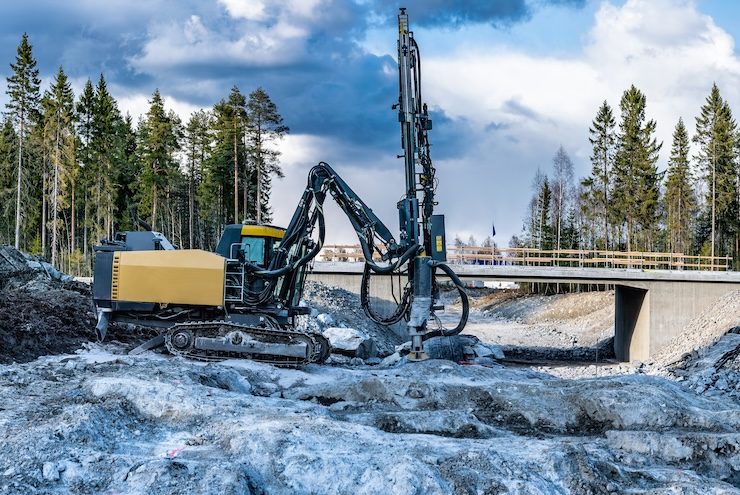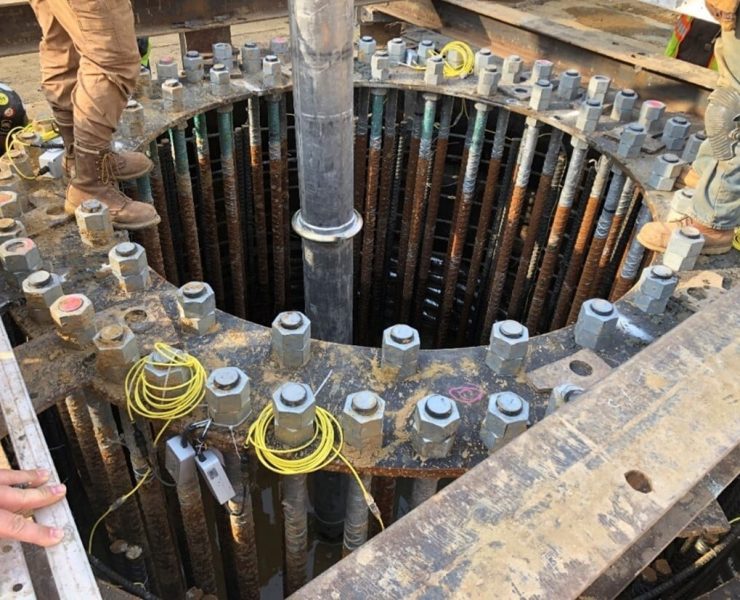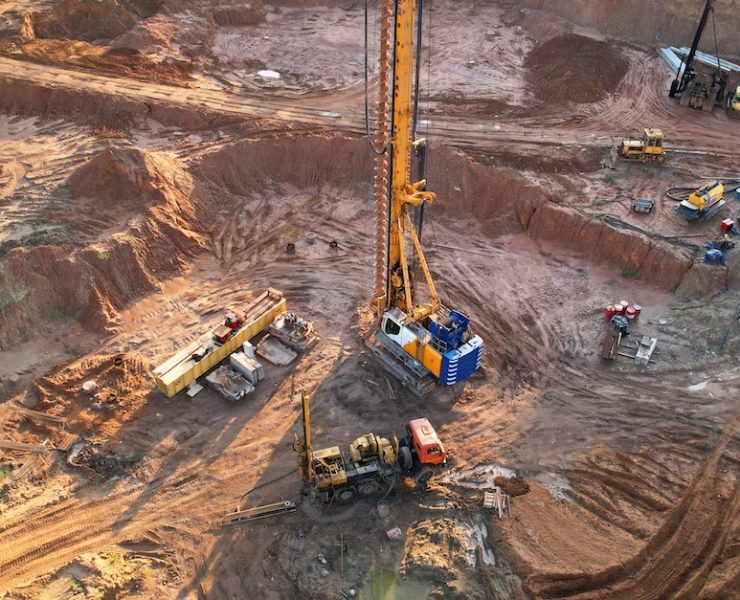Ground Modification Methods for Deep Foundations Part I – An Introduction
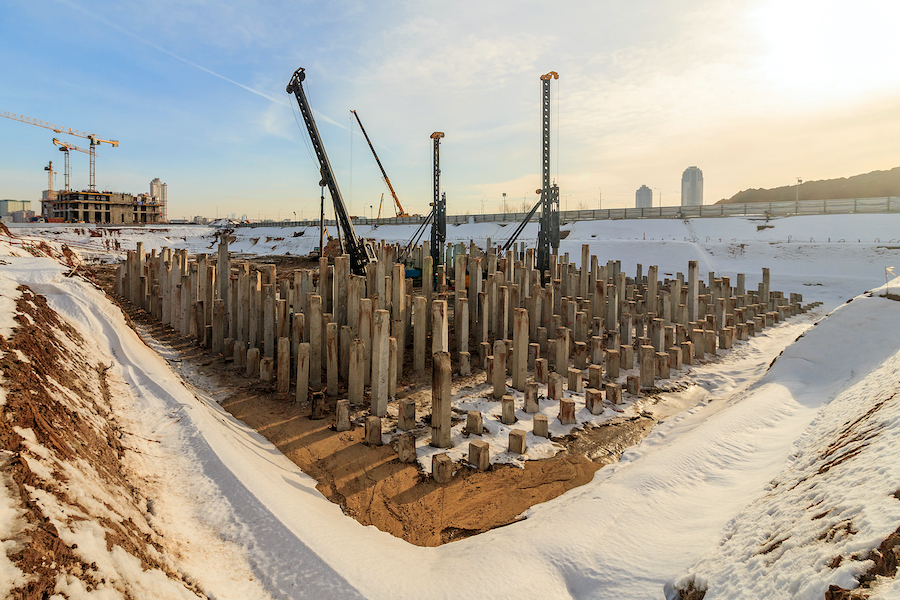

In infrastructure projects, difficult ground conditions are often encountered. To achieve project objectives, contractors can use a number of techniques, including (1) relocating the project to a more suitable site; (2) using a deep foundation; (3) removing and replacing unsuitable soils; (4) designing the proposed structure to accommodate the marginal ground; or (5)modifying or improving the existing soils, either at the site or by removing, treating and replacing the soil.
Using both ground improvement and geoconstruction technologies, both marginal sites and unsuitable in-situ soils can be improved to meet demanding project requirements. This is often a most cost-effective solution for many building projects. Using ground modification, a contractor can “fix” poor ground conditions and make them suitable for the needs of the project.
Ground modification is a process that involves improving the ground — not merely treatment. It involves the alteration of site foundation conditions or of earth structures in order to enable better performance under design and/or operational loading conditions. The objectives of ground modification can be achieved using a variety of geotechnical construction methods and/or technologies that alter and improve poor ground conditions. It is used in situations where replacement of the soils is not feasible due to cost, environmental concerns, or technical reasons.
Ground modification can accomplish a number of goals, including:
- Increasing resistance to liquefaction
- Providing lateral stability
- Increase density
- Decreasing permeability
- Increasing both shear strength and bearing resistance
- Controlling deformations
- Increasing drainage
- Decreasing imposed loads
- Accelerating consolidation
- Transferring embankment loads to more competent subsurface layers
It is often useful when performing reconstruction, rehabilitation or upgrading of highway systems. These projects typically need to be performed in a relatively tight time schedule while minimizing disruptions to existing traffic. Ground modification can be a way to ensure a long-lasting facility while working with in these constraints.
Due to the increased need to use marginal sites for new construction and in order to mitigate risk of failure or poor performance, ground modification is an increasingly common technique. It is routinely considered on most projects where poor or unstable soils are present, particularly where sites are underlain by suspect or uncontrolled fills. For contractors, these techniques can reduce both construction time and costs.
Functions of Ground Modification
There are a range of ground modification and geoconstruction technologies available that can be used to improve soils. These fall into several broad categories: compaction, consolidation, grouting, soil stabilization using admixtures, thermal stabilization, and reinforcement of soil. Additionally, ground modification types can be classified by their function, as described above.
When the goal is to increase shear strength and bearing resistance, contractors can use techniques designed to increase the soil’s strength. This may be done by densifying loose soils that lack cohesion, consolidating soft clay soils, or by adding cementing agents to the soil.
Increasing density of soils usually involves densifying loose sands through methods that use vibration or a dynamic process to add energy to the soil. This energy then changes the loose sand into a more dense state, which gives it increased strength and resistance to liquefaction as well as increased bearing resistance. If the soil is cohesive, densification can be accomplished through processes that remove water from the void spaces. This will reduce the amount of settlement that will occur when loads are applied to the soil.
When water flows through soils, ground modification techniques can be used to decrease permeability. Generally, this is done through increasing the density of the soil or by adding grouts or binders to make the soil comparatively impermeable. These additives may also be used to fill fissures.
To control deformation of soils, contractors may use methods such as densifying or consolidating the foundation soils, or adding grouts or binders to strengthen the soil and control deformations. These tactics can reduce the total settlement, heave, and distortion that may be caused by differential settlement. Columns may also be used to transfer loads to more appropriate materials. If soil heave is expansive, the area can be teated with binders to mitigate the effects of water.
Where soil is saturated with water, increasing drainage will allow for more efficient removal of water from the foundation soils. Reducing water improve the strength and stiffness of almost all soils. Increasing drainage can also help to reduce the soil’s susceptibility to liquefaction.
To reduce the settlement time for foundation soils, it may be useful to accelerating consolidation. This can be done through embankment loading, fill preloading, and reducing the drainage path length, via the use of prefabricated vertical drains or other columns.
If the goal is to decrease imposed loads, lighter weight fill materials should be used. This can reduce settlement and stability issues for weak soils.
When projects involve changes in grade requirements, lateral stability can be provided using earth-retaining systems in both cut and fill situations. This type of support may be provided for both vertical and sloping sites.
To increase resistance to liquefaction, the soils can be densified through vibratory or dynamic methods. This goal may also be accomplished by adding grouts and binders to the soil, increasing drainage, and isolating potentially liquefiable soils.
Finally, if vertical loads need to be transferred from loose or weak soils, columns can be added so that the loads are moved to more competent layers. Doing this can help to control settlement (especially differential settlement), as well as the overall stability of the project.
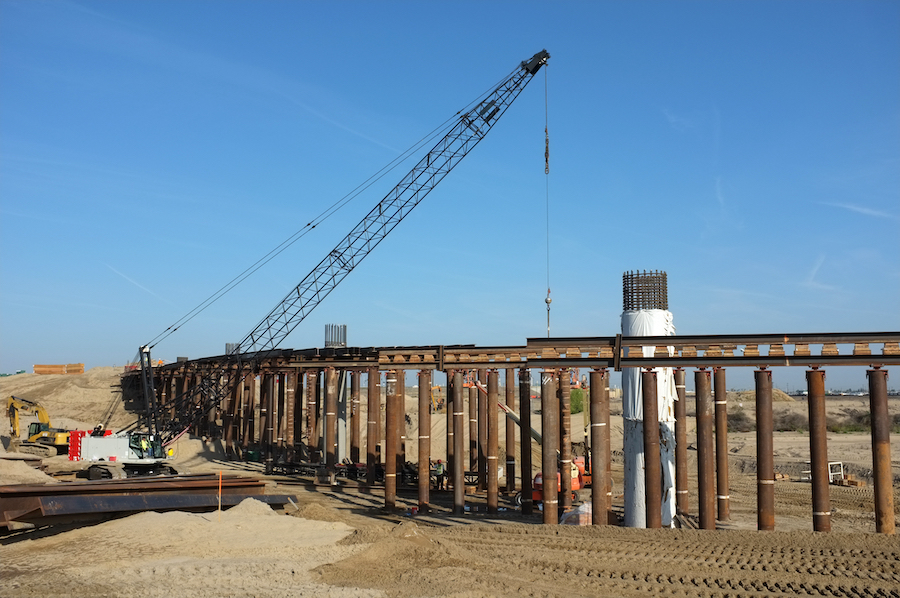
Application of Ground Modification Techniques
Any or all of these techniques may be used in different highway and transportation infrastructure applications. For example, in bridge construction, structure support is critical. However, where bridges cross water, the project is often situated in an alluvial environment where the soil deposits include soft clay, loose sands, and dense sands in an inter-layered and non-uniform fashion. Deep foundations can be utilized to support bridge abutments and piers, ground modification to improve site conditions allows for less expensive foundation types to be used.
Embankments, which are used to support highways and to change the grade along an alignment, are often constructed across unstable soils. Ground modification techniques can be used to improve unstable foundation soils, which will help to avoid the costly excavation and disposal of unsuitable soil.
Where embankments need to be widened to increase the capacity of roadways, differential settlement between the existing and new embankments may occur. Ground modification can be used to stabilize compressible or unstable soils. This is often accomplished through the use of lightweight fill materials, embankments supported by columns, and methods to increase the bearing resistance of the soils. Together, these strategies can reduce the potential for unwanted movements.
The pavement section of a roadway is supported by sub grade soil. If this soil is poor, it may not be able to support construction equipment. Pavement support can be increased by stabilizing the sub grade through mechanical and chemical means, improving drainage, and using alternative or recycled materials.
To support ground modification equipment on poor soils, construction working platforms are often used, along with temporary roadways. The same methods used for pavement support can be used to support working platforms, although this process is temporary in nature.
Importantly, all ground modification technologies are subject to limits on their applicability. These limits may be based on soil type, depth of treatment and other factors. Future articles will explore the limits of each application type.
Evaluating Feasibility
To determine whether a particular ground modification technique will be feasible, contractors must evaluate both the functions of the modification as well as the methods that will be used to carry it out. Feasibility evaluations should include the following steps:
- Identify project conditions that may require either ground modification or geoconstruction technologies, such as projects that involve poor ground conditions, the need for a working platform or access road, the need for retaining walls or steep slopes, or pavement foundations.
- Identify or establish performance requirements for the project.
- Identify time, space, and/or environmental constraints.
- Evaluate the conditions of the site.
- Assess any constraints on the project
- Determine any limits on the use of ground modification technologies.
- Consider alternatives to ground modification methods.
Project constraints involve items such as budget and cost, project schedule and time, traffic flow, interruption and congestion, weather, and environmental factors. Speed of ground modification techniques is often a primary consideration given the need to accelerate schedules on most modern construction projects.
For each project, the performance requirements — or operational criteria — should be established. These requirements are typically defined in geotechnical terms, such as rate of settlement, total or differential settlement, stability requirements, seepage, and durability. Based on these criteria, the level of soil improvement for characteristics such as strength, density and compressibility can be established.
Environmental and space restrictions should also be identified through this process. This may include factors such as the disposal of waste materials, protection from erosion, protection of surface and ground waters from pollution, and the impact of construction noise, dust, and vibration. Space restrictions often involve issues such as the accessibility of the site, whether there is enough area for construction equipment to operate safely, overhead clearance, and the presence of structures and utilities nearby.
When evaluating site conditions, subsurface conditions should be the primary factor. Soils that may impact the performance requirements should be identified along with the required engineering properties to perform a preliminary design for the project. The location of the groundwater table along with the type, depth and extent of necessary treatment must be determined. In addition, if a site has poor ground conditions, a preliminary assessment of shear strength, compressibility, and organic content of the poor soils should be performed. Subsurface obstructions should also be identified, including cobbles, boulders, organic layers, and water-bearing sands, as these can each impact the selection of appropriate technologies. Finally, the availability of construction materials should be evaluated.
There are a number of potential limitations on the use of ground modifications techniques, including general limits, site-related issues, and limits related to technology. For example, general limitations may include lack of knowledge about technologies, lack of effective quality assurance procedures, availability of equipment and experienced personnel, and lack of organizational structure and policies that would encourage innovations.
Within a site, limitations may include environmental constraints, obstructions, unusual construction loads and vibrations, and environmental conditions. Ground modification technologies also have limits on their use. This includes depth limitations, time to construct, headroom requirements, and design and quality assurance requirements.
Importantly, ground modification is not the only possible means of addressing poor ground conditions. Other options may include relocating the project to a more suitable site, using a deep foundation, removing and replacing the soil, or designing the structure to accommodate the marginal ground conditions. These alternatives should be examined before any project is undertaken.
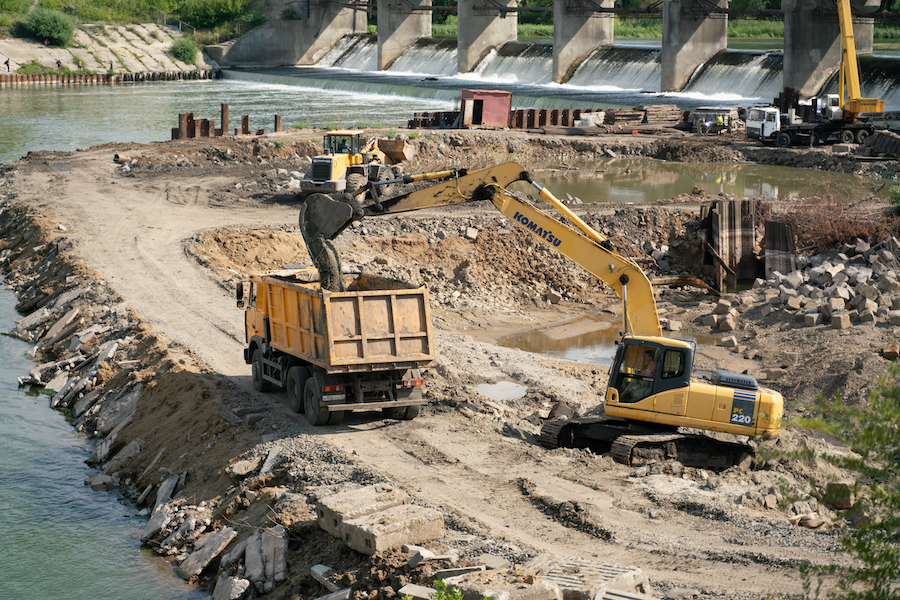
Types of Technology Used in Ground Modification
Difficult or unstable soil conditions, such as soft or loose foundation soils, require the use of ground modification techniques. These technologies can be used for construction over these unstable soils, over stable or stabilized soils, in geotechnical pavement components, as well as on working platforms.
Construction over unstable soils uses methods to support both embankment or widening of embankments on weak or loose foundation soils. This type of ground modification will be performed below-grade to improve the unstable soils, allowing embankments to be safely constructed without issues related to deformation. In some cases, at-grade technologies may also be applied to this type of construction. These methods may be used for bridge abutment support, roadway widening, approach embankments, and support of structural elements.
Construction over stable or stabilized soils uses above-grade technologies. This may include fill placement and compaction procedures, reduction of embankment width or volume, slope stabilization systems, and fill earth retention systems. These methods work to strengthen the embankment materials while allowing for geometric constraints, including retaining walls or stabilizing cut slopes. These techniques can be used in retaining systems for bridge abutments as well as to minimize right-of-way needs.
Geotechnical pavement components use methods to improve the subgrade, base and subbase courses, each of which is a supporting element of pavements. Fill placement, grouting, stabilization and reinforcement technologies can be used to achieve these goals. In addition, recycling or reusing materials in pavement support sections may be used.
Working platforms involves methods to provide platforms for construction work on either stable or unstable subgrades. This may involve stabilization, reinforcement technologies, and/or fill placement, as well as recycling or reuse of materials in geotechnical pavement support sections. These platforms are assumed to be temporary structures.
Managing Risk While Performing Group Modification
There are a number of limitations — or constraints — on construction activities that can impact project delivery performance. These constraints are specific to a project, and may present risks to the successful completion of a project. Ground modification techniques can be used to mitigate certain project risks, allowing contractors to work within a given set of restrictions.
Constraints on a construction project may include economic, legal, social, environmental, time, management, and technical issues. For purposes of ground modification methods, constraints may be classified as either general or geotechnical. To properly mitigate constraints, it is important to identify these limits early on and to define the constraint itself properly.
General constraints include any type of restriction that isn’t connected to the technical aspects of the project. For example, in a transportation infrastructure project, constraints may include budget and cost, geometry, traffic flow or interruption, availability of personnel, public perceptions, liability, and the project schedule and time. Some general constraints may apply throughout the project, while others are only applicable during a particular time in the project lifecycle. A proactive approach should be taken with regards to general constraints so that they can be resolved before impacting the project itself.
Geotechnical constraints include any geotechnical aspects of the project, as well as the ground modification technologies that may be used to address them. This may include contaminated groundwater, subsurface conditions, stability requirements, time for modification to be effective, environmental impacts of technology, and constructibility of the chosen technology.
Beyond constraints, every construction project includes some element of risk. With regards to geotechnical construction, risk is the likelihood that an adverse event will occur, and that this event will affect the project goals. This may include a delay in construction or even a resign of a geotechnical component (such as the foundation). Potential geotechnical risks are:
- Deformations (both vertical and lateral)
- Liquefaction
- Slope instability, for both soil and rock slopes
- Bearing capacity
- Contamination
- Subsidence
- Chemically reactive soils
- Groundwater levels and fluctuations in these levels
- Contamination
- Problematic ground conditions
- Unforeseen ground issues
- Inadequate geotechnical investigation
- Poor construction or monitoring of construction
- Inadequate design
Legal issues related to highway projects often center around geotechnical issues. This fact highlights the importance of considering geotechnical risks.
As part of the construction process, geotechnical risks should be identified, accepted, managed, and mitigated. Sound geotechnical practices as well as hazard recognition during site investigations can reduce these risks significantly.
The risk management process for both geotechnical and general risks involves applying management policies, procedures and practices to identifying, analyzing, evaluating, treating, monitoring and reviewing risk. The first step in the risk management process is identifying several key issues: (1) project objectives; (2) context of the risk; (3) criteria used to assess the risk; and (4) who will perform the assessment.
During this initial phase, risks should be identified, analyzed and assessed, and then prioritized in a risk register. From there, risk response plans can be developed. A tracking plan will allow for monitoring, evaluation and adjustment as various risks are responded to and new risks arise. Communication and consultation should occur throughout this process.
The Contracting Process for Ground Modifications
Project delivery refers to the entire process of a construction project, from initial planning and programming to closing out construction. Project delivery for transportation infrastructure projects usually includes the following elements:
- Planning and programming
- Environmental stewardship
- Conceptual studies
- Preliminary design
- Final design, along with plans, specification and estimate (PS&E)
- Construction
Traditionally, construction projects were conducted using the design-bid-build process. However, in recent years, other mechanisms have been developed, including design-build (D-B) and construction manager-general contractor (CMGC). With D-B, two separate project phases are combined into a single contract, with one entity (the design-build team) working under a single contract with the owner. The advantage of this system is unified work flow.
In contrast, with CMGC, the project owner hired a contractor to provide feedback during the design phase of the process. There are two phases with this method. During the design phases, the contractor works with the designer to identify risks, offer cost estimates, and refine the schedule. The project owner and contractor then negotiate the price for the construction contractor. In the second phase, construction begins. This method can accelerate project delivery.
As part of the design process, preparation of specifications is necessary for the use of ground modification technology. These specifications are part of the contract documents, and involve written instructions describing the work that will be undertaken. Specifications include the directions, procedures, and material and equipment requirements that are necessary (per the project owner) to complete the contract work.
For highway infrastructure projects, state departments of transportation often do not have specifications prepared for ground modification technologies. In these situations, specifications may have to be developed so that ground modifications can be used on a particular project.
Finally, quality assurance (QA) is a necessary part of any contract that involves ground modification. Under federal law, a construction quality assurance program should include:
- Contractor quality control (QC)
- Agency acceptance
- Agency independent assurance (IA)
- Dispute resolution
- Laboratory accreditation and qualification
- Personnel qualification or certification
Each of these six elements are necessary for an effective QA program.
Monitoring throughout construction is used to provide QA on both methods and materials of construction. It is also used to reduce the risks that are associated with variations in material and property of the in situ soils. Because ground modification work often involves construction over or through marginal ground conditions, instrumentation and monitoring through this process should be routinely performed.
Field observations can be used to design a safe and efficient project; this observations are obtained by field instrumentation. By setting up instruments and monitoring them throughout construction, a contractor can more effectively manage the risks involved with ground modification.
Monitoring is done for a number of reasons, including (1) to provide a warning of an impending failure or unsafe condition; (2) to evaluate the contractor’s methods; (3) to inform stakeholders; (4) to comply with regulations; (5) to demonstrate that performance is safe; and (6) to improve performance and advance knowledge.
Geotechnical instrumentation can be used throughout construction to prove that a contractor’s means and methods are meeting the performance requirements, and that the end product performs as intended. These tools can also be used to provide data to show the possibility of undesirable performance early enough to correct course. In this way, instrumentation can ultimately save money on a project by allowing contractors to reduce the potential consequences of undesirable performance.
Today, performance monitoring allows engineers to monitor almost any aspect of construction — and often in real time. Options for devices to monitor geotechnical performance include:
- Observation well, to measure depth to ground water
- Piezometer, to measure total head at a specific location
- Earth pressure cell, to measure total normal stress in soil
- Load cell, to measure force in a structural member
- Contact pressure cell, to measure normal stress between soil and contact with a rigid material
- Settlement gage, to measure vertical deflection of one point relative to another
- Settlement plate, to measure vertical deflection at a specific point
- Temperature, to measure temperature at the location of the sensor
- Geophone, to measure velocity of motion in 1 to 400 Hz range
During ground modification, the selection and application of QA methods can be a complex process. The contract itself may specify the party responsible for QA; this requires clear communication between all parties involved in the contract. In addition, QA methods may be more complex for different ground modification technologies. The party responsible for QA must understand how various QA methods may impact the selection of a particular ground modification technique.
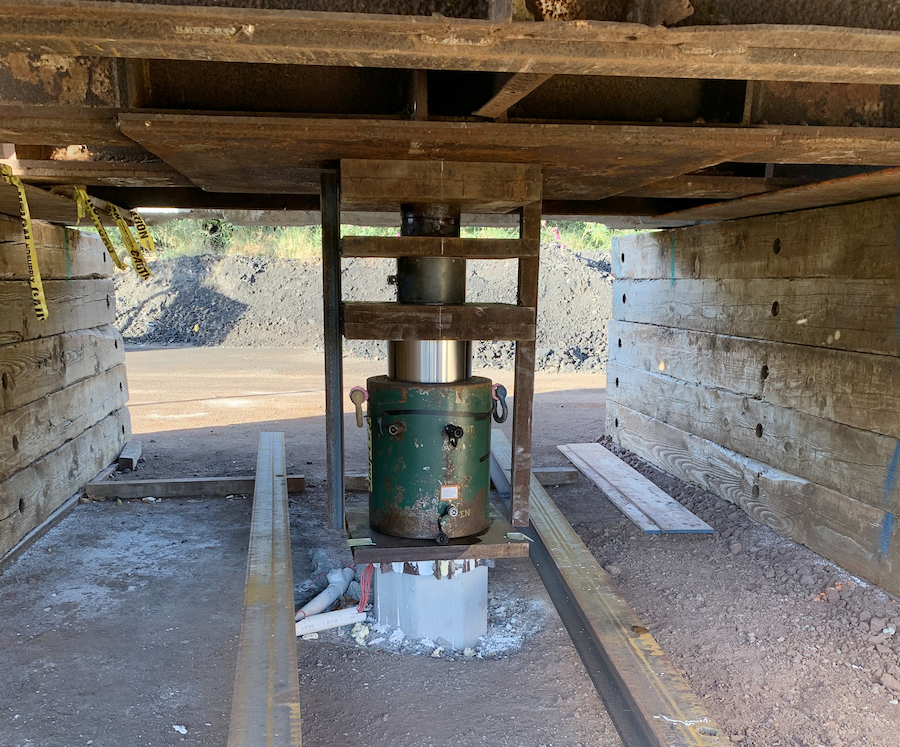
Cost Analysis
In any ground modification project, an analysis of the proposed costs of the method used is necessary. A baseline cost for particular ground modification technology should be determined as a way to estimate costs for the various options. Given the range of ground modification technologies, there is not an average price for “ground modification.” Instead, the cost is influenced by a number of factors.
The main costs involved in a ground modification project include mobilization, materials, labor, and equipment. In addition, the cost of quality assurance (including instrumentation and any tests that must be performed) will impact price. The project type, application, soil type, labor rates, geoconstruction technology, location, utility conflicts, weather and competition may also affect the cost estimate.
Many cost estimates include quotes for lineal feet or square feet of installed product based on the primary costs described above. For example, deep compaction using deep dynamic companion may cost between $10 and $30 per square yard, while the same type of ground modification using vibrio-compaction may cost $5 to $9 per lineal foot.
Mobilizing and demobilizing equipment is generally a lump sum item, and may range from just a few hundred dollars to over $100,000, depending on the technology used. Costs for site investigation, QA testing, and instrumentation are not included in this aspect of the estimate.
A geotechnical solution should primarily be chosen on the basis of engineering needs. When two or more technologies can be used, engineers may then consider the initial cost of each option. Initial cost should not be the basis of a decision, as performance, life cycle costs, risks and safety and construction time must also be considered.
To put together a cost estimate, contractors should identify and understand variables within the projects (such as labor rates), and understand how those factors will impact overall cost. A cost estimate cannot be made until information about the site conditions has been gathered and analyzed.
Project Evaluation
The selection of an appropriate ground modification method as well as optimization of its design and construction requires extensive knowledge if project requirements are to be met. The individual or team involved in this process must have an understanding of the functions of various methods, be able to utilize multiple selection criteria, be able to use suitable design procedures, to be able to select and implement appropriate methods for quality assurance, and to consider both cost and environmental factors.
Evaluation and selection of a ground modification method for a particular project should be done through a 12 step process, as outlined below:
- Identify potential unsuitable ground conditions, as well as the need for modification
- Establish performance requirements
- Identify and asses general site conditions
- Assess subsurface conditions
- Develop a list of potential geotechnologies that may be applicable for the site
- Consider project constraints
- Evaluate project risks
- Prepare a preliminary design for the site
- Identify any alternate solutions to ground modification
- Evaluate project requirements, constraints and any risk factors that may impact geotechnology selection
- Compare geotechnology alternatives with selection factors (such as speed of construction, cost of construction, aesthetics, life-cycle cost, and environmental factors)
- Select an appropriate geotechnology
Once a geotechnology method has been selected, further information may be necessary in order to put together a final design as well as a cost estimate for the project. Ground modification often requires specialized parameters for design and construction that are not gathered during initial site investigations. Supplemental investigations, particularly of the subsurface, may be necessary to gather the required information.
Finally, a combination of geotechnologies should be considered as part of this process. Complementary technology options can be found via the geotechtools.org website under the Technology Fact Section. Some combinations may be more successful than others. For example, a shallow compaction method (such as rapid impact compaction) can be used for the 5 feet of soil below the ground surface that is not densified by blast densification. In some sites, prefabricated vertical drains may be used with fill preloading to accelerate consolidation.
The ground modification process can be complicated, and requires a thorough understanding of the technology options and their best uses. Throughout this series, we will explore options for ground modification, as well as how they can be best integrated into your technology project.
Sources:
What are the common goals achieved through ground modification?
Ground modification can achieve various goals, including increasing resistance to liquefaction, providing lateral stability, increasing density, decreasing permeability, enhancing shear strength, controlling deformations, improving drainage, reducing imposed loads, accelerating consolidation, and transferring embankment loads.
How can ground modification mitigate risks in construction projects?
Ground modification helps mitigate risks by addressing poor ground conditions, reducing settlement time, controlling deformations, stabilizing embankments, and providing support for construction work on unstable or stable subgrades, ultimately enhancing project performance and minimizing potential issues.














